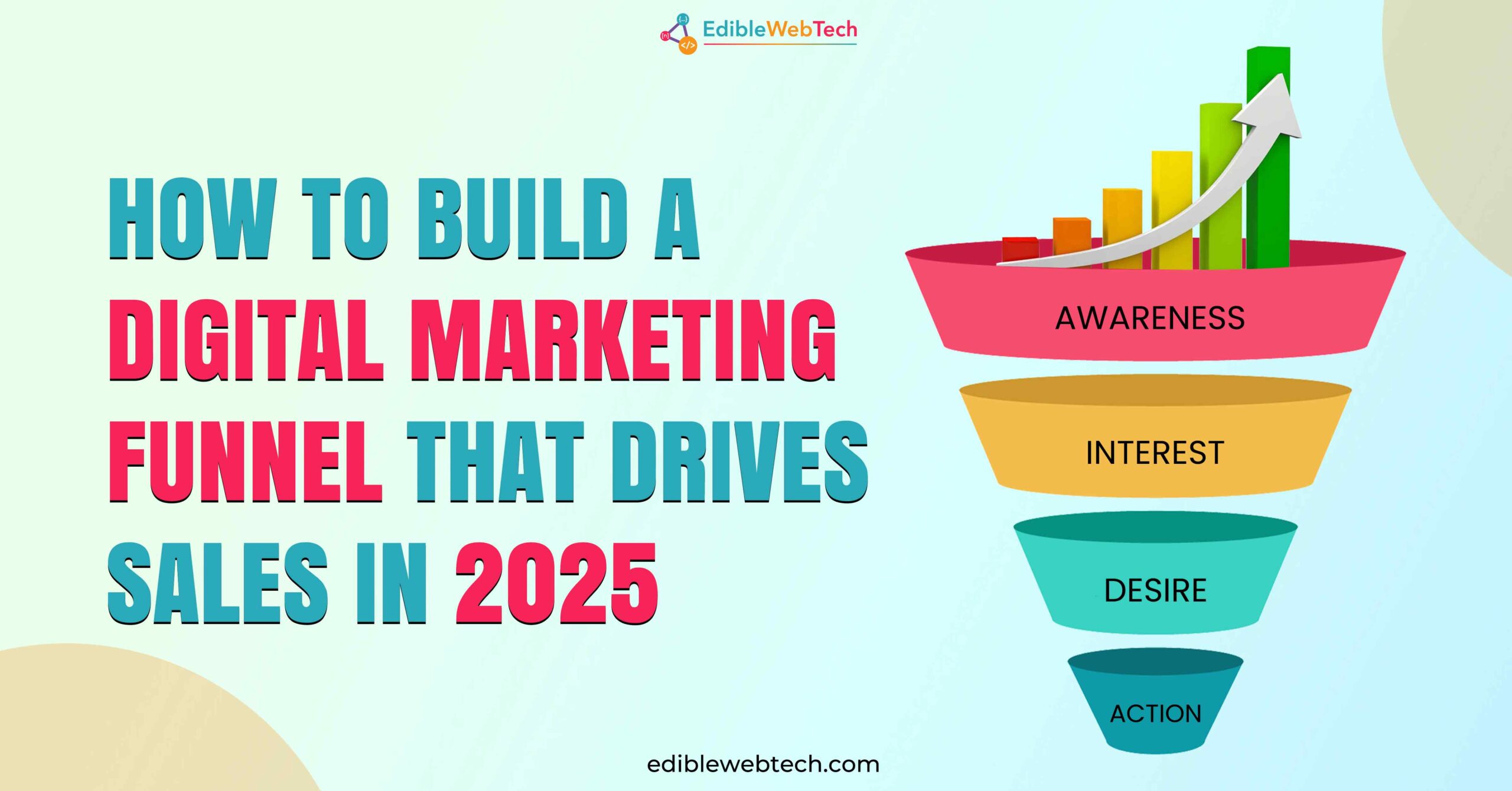Have you ever thought why your marketing strategies and advertising campaigns did not work?
Most of the time you have analyzed that potential customers visit your website, engage with your content but then they disappear. Sound familiar?
Your sales offer is solid and your ad creatives are good then why is your target audience not converting?
The answer lies in your digital marketing funnel. In 2025 every marketer should understand the concept of the digital marketing funnel to generate more sales. A strong digital marketing funnel acts as a 24/7 sales assistant for your brand, working even while you sleep.
This blog guides you on what digital marketing funnel is, why it matters, and how to create a strong digital marketing funnel that works for you in 2025.
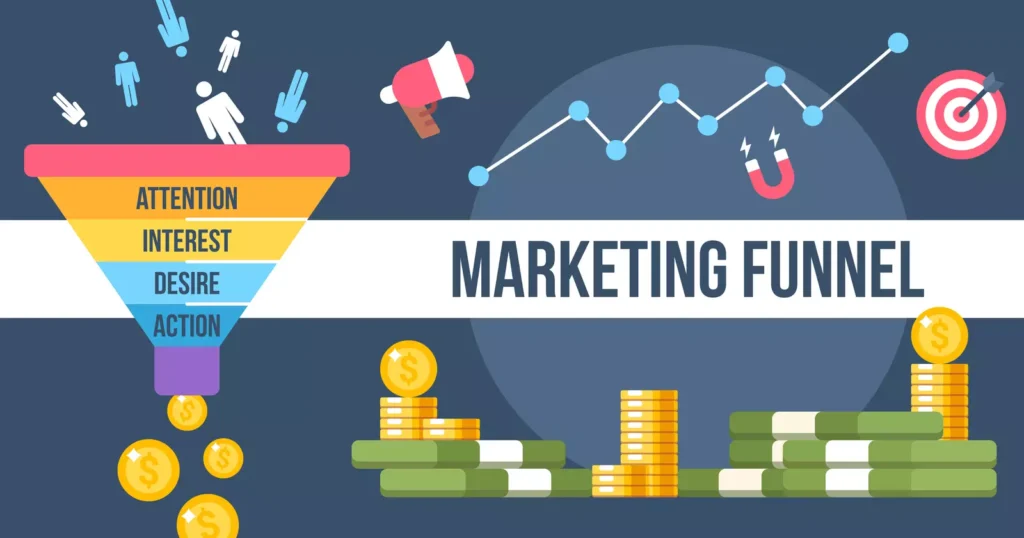
What is Digital Marketing Funnel?
The digital marketing funnel is a roadmap for your audience that takes strangers from discovering your brand to trusting it and finally purchasing from you. It’s like funnel that broadens from top and narrows at the bottom. At the top, you have lots of people who might be interested in what you offer. As they move through each stage some will drop off but the ones who make it to the bottom are your most qualified, ready to buy customers. Marketing funnel makes it easy for you to build better sales strategy. They guide you about:
- Understanding your target audience and guiding you on how to approach them.
- Identify pain points of your customers.
- Contextualize your marketing results.
The marketing funnel operates automatically and approaches target audience according to their needs. The digital marketing funnel works differently, it’s not like traditional approach in which full sales process relied on sales pitch to convince customers. Most of marketers use the AIDA model in digital marketing funnel. AIDA framework is:
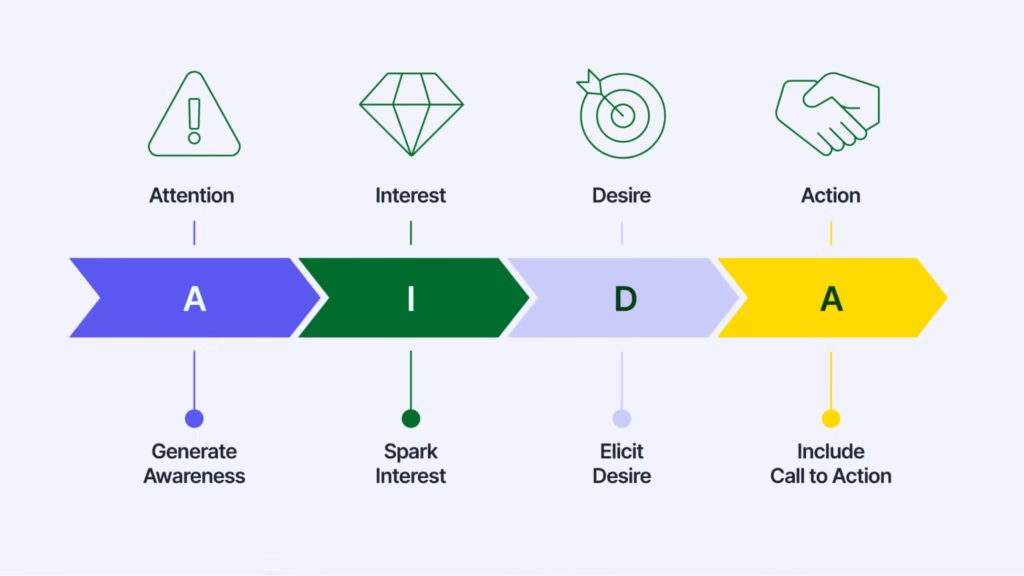
- Awareness: Customers discover your brand online.
- Interest: Customers show interest in your product.
- Desire: Customers gather more information about your product.
- Action: Customer makes mind to take action to buy your product.
To better understand how this works, let’s take an example of Online Fitness Coaching, how they use each stage of marketing funnel to generate sale.
| Funnel Stage | Goal | Tactics Used |
| Awareness | Get noticed by potential clients | Instagram Reels, YouTube workouts, SEO blog posts like “Best Home Workouts” |
| Interest | Build curiosity and engagement | Free downloadable workout guide, email opt-in with “7-Day Fitness Challenge” |
| Desire | Nurture leads and build trust | Email series with client success stories, comparison of coaching plans |
| Action | Turn leads into paying clients | Limited time offer, testimonials, clear CTA. |
Why Digital Marketing Funnels are Important for Your Marketing Strategy
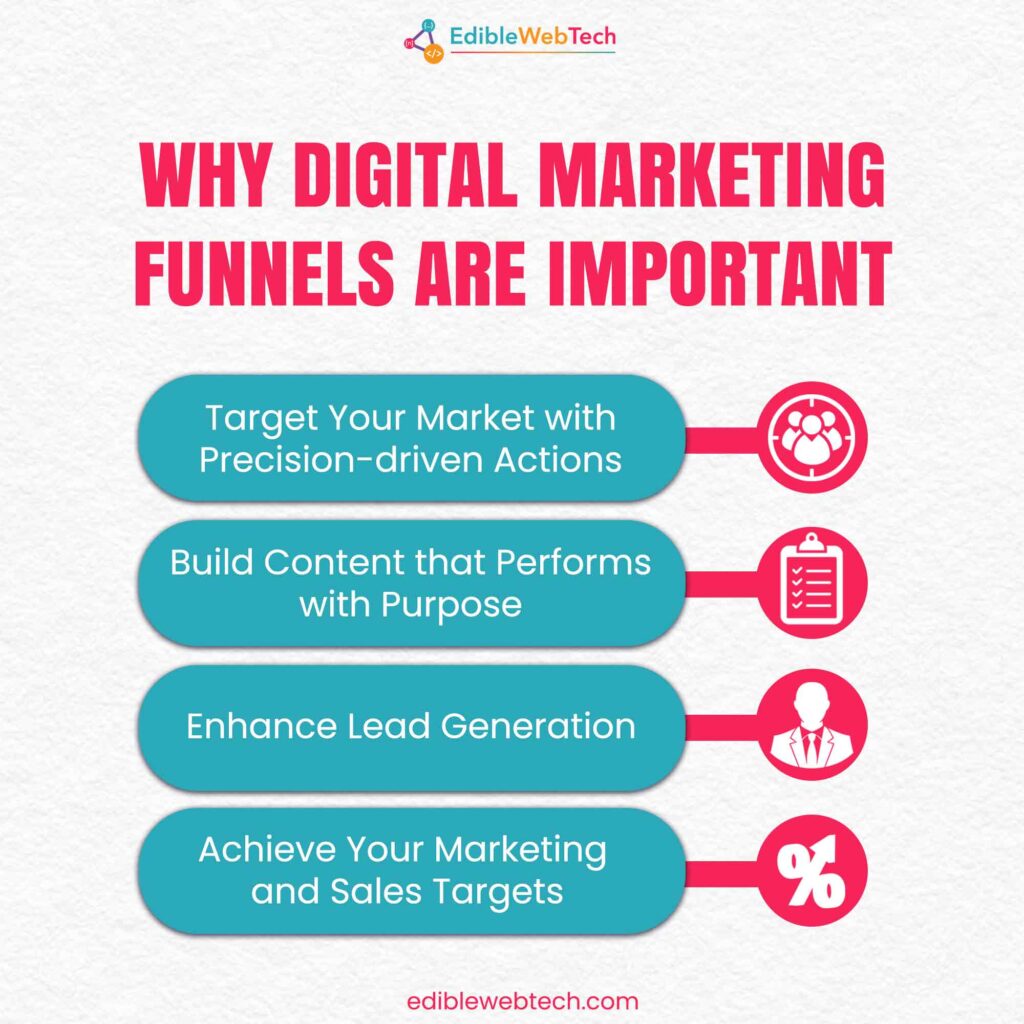
Your marketing strategy is incomplete without digital marketing funnel. Let’s see how marketing funnel supports marketing strategy:
1. Target Your Market with Precision-driven Actions
Your main marketing goal should be to provide better solution to your customers at right time when they need it the most. Every customer has different taste, so segment your market action according to different marketing funnel stages which helps you to target right audience.
2. Build Content that Performs with Purpose
The marketing funnel guides you to build effective content marketing strategy for different customers at different stages. It’s like sharing an upsell landing page to customer who has never heard of your brand, just like it would be less efficient to offer free download to someone already on your email list.
3. Enhance Lead Generation
With right segmentation and effective content marketing strategies can help you get more leads. Planning content according to sales funnel stages makes consumers feel you are speaking directly to them.
4. Achieve Your Marketing and Sales Targets
Marketing funnel metrics guide you to create effective content and marketing campaigns which lead to better ROI and make your marketing strategy successful.
What are the Stages of the Digital Marketing Funnel?
Marketing funnel is aka sales funnel. Most marketers follow the AIDA model in digital marketing funnels. Here is complete guide on stages of digital marketing funnel:
A= Awareness
I= Interest
D= Desire
A= Action
Awareness (TOFU)
This is the first stage of sales funnel in which brands create awareness among their potential customers that they also stand out in market. This is a stage when people know about your products or services through search.
For Example:
If someone Googles ‘Best digital marketing services in Amritsar,’ your audience should see your name and know you are in the game.
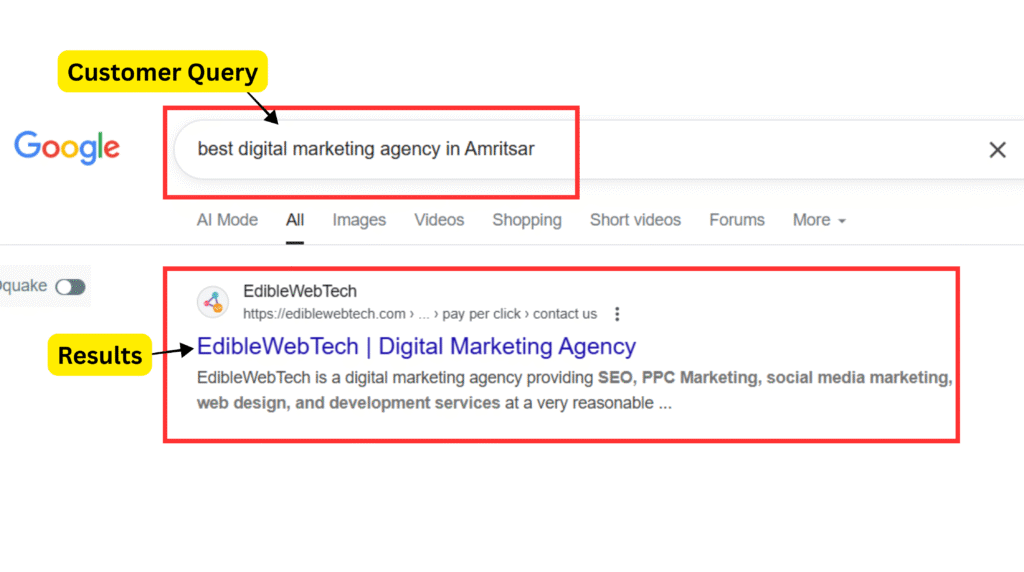
Interest (MOFU)
At this stage people want to learn more. This is where you build interest and create desire for your specific solution. Free resources like eBooks, webinars, and case studies work well to nurture leads.
Desire(BOFU)
In this consideration stage, people show interest in your content and engage with your brand. Let’s clear it out with an example:
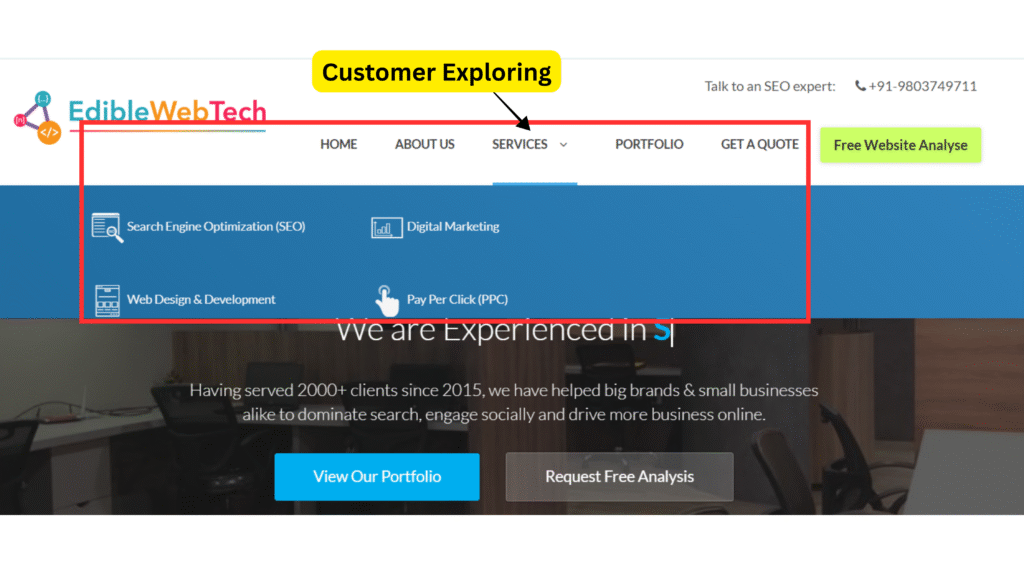
Move further with previous example of awareness stage, now people find out what services you provide, exploring your about us section of website, checking your work portfolio so that they can decide to contact you.
Action(BOFU)
In last stage, it’s a time of conversion when your potential customer decides to buy from you. They are one step away from becoming paying customers. At this stage, strategies include free consultations, demos, testimonials, guarantees, and limited time offers. You are removing final objections and making it easy to say yes.
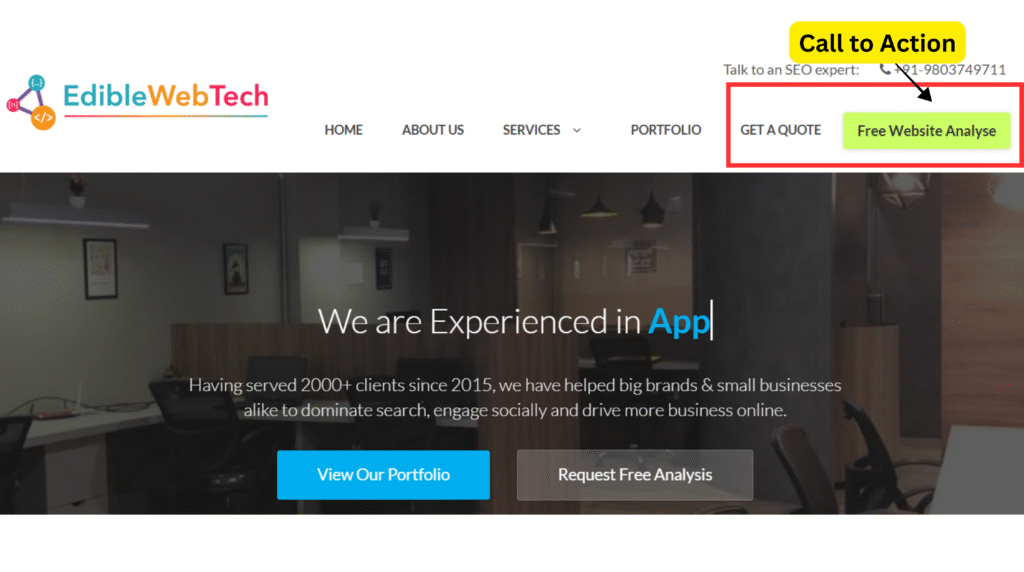
Also Read: QR Code Marketing: What It Is and How to Use It Effectively in 2025
How to Build a Digital Marketing Funnel That Drives Sales
The most important part of planning marketing strategies is the sales funnel. Creating and implementing marketing funnel requires strategic planning. We help you build digital marketing funnel that drives sales for your business in 2025.
- Define Your Audience Clearly
- Map Content to Funnel Stages
- Leverage Automation and Personalisation
- Focus on Conversion Rate Optimization
- Nurture Leads at Every Stage
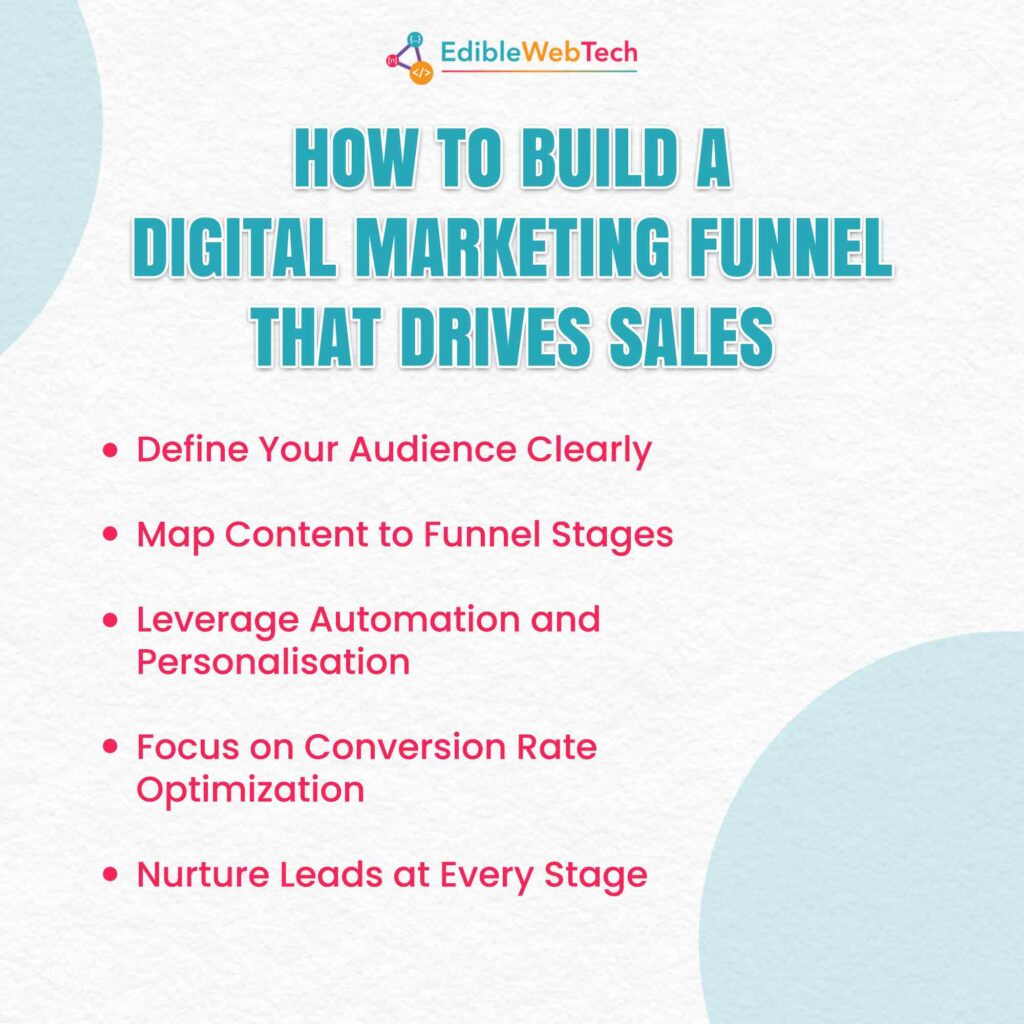
1. Define Your Audience Clearly
Beginning with ads or content straight away makes your marketing plan useless. First, you need to identify your target audience, whom you would like to communicate with. Create specific buyer personas that include demographics, pain points, goals, and purchase behaviors. The more specific you are, the better your funnel will work.
For Example:
If you are selling online fitness program then your audience might be young professionals who want flexible workout options. Knowing this helps you create messages that feel personalised for them.
2. Map Content to Funnel Stages
To make implementing marketing campaigns easier, many marketers further simplify the funnel into three stages:
- Top of the funnel (TOFU) – Awareness.
- Middle of the funnel (MOFU) – Interest.
- Bottom of the funnel (BOFU) – Desire and Action.
Not all content works for everyone. You need to segment your content marketing strategies into funnel stages.
Top of the funnel (TOFU) – Awareness
At awareness stage, our main goal is to attract customers towards our brand as many as possible. Develop content marketing strategies that attract your ideal customers. It includes blog posts targeting long-tail keywords, social media content that addresses common problems.
Middle of the funnel (MOFU) – Interest
- Develop email nurturing, retargeted ads, and training content to move people from awareness to consideration.
- This is where you build trust and demonstrate credibility.
- Use case studies, offer free resources, and address common objections.
Bottom of the funnel (BOFU) – Desire and Action
In this actionable stage, make it easy for customers to take quick actions. Add compelling reason to buy right now. This includes optimizing your pricing pages, offering consultations, providing guarantees, and creating urgency with limited time offers.
3. Leverage Automation and Personalisation
Customers want that brand to be fast and personal at the same time. You need to implement automation to connect with your target audience.
- Use Email automation to send personalised messages according to customers behavior and preferences.
- Retarget customers by showing them ads who come to your website but did not buy. This keeps your brand more visible and keeps it in their mind.
- Use AI tools to recommend products, content, and offers according to each visitor.
4. Focus on Conversion Rate Optimization
Creating sales funnel does not mean passing each customer through stages, its all about how many actually convert.
- You need to implement conversion rate optimization by continuously testing and improving each stage of sales funnel.
- A/B test your headlines, calls-to-action, email subject lines, and landing pages.
- If your website page load speed takes time then improve your site speed and experience.
5. Nurture Leads at Every Stage
Many marketing strategies became unsuccessful because of one mistake, i.e, selling too early. Take it as dating each other, you would not propose on first date, right? Similarly in digital marketing funnel, we don’t directly sell to our customers.
- Provide consistent value through newsletters, blog posts, and educational content.
- Share testimonials and behind the scenes content to build trust.
- Only pitch your product once you have earned credibility
By following these steps you will create funnel that not only captures leads but actually drives sales for your business in 2025.
Wrapping Up
Building digital marketing funnel does not mean following latest trend, you need to recognize your audience pain points, what they want, and how you can provide solution to them. It does not mean once you create sales funnel, process is finished. You need to retain your ideal customers by building trust with them.
The investment in building proper digital marketing funnel pays dividends for years to come. You will have predictable revenue, happier customers, and marketing system that works around the clock to grow your business.
FAQ’s
Q1. What is funnel in digital marketing?
Ans. Digital marketing funnel is the journey that guides people from first discovering your brand to finally becoming a customer. It helps you move strangers into loyal buyers step by step.
Q2. Why is AIDA model is important?
Ans. The AIDA model (Awareness, Interest, Desire, Action) is important because it explains how people make buying decisions. It helps businesses create the right message at the right stage to turn interest into sales.
Q3. What is the difference between sales funnel and marketing funnel?
Ans. Marketing funnel focuses on attracting and nurturing potential customers and sales funnel is about closing the deal and turning those leads into paying customers.
Q4. What is the sales conversion rate?
Ans. Sales conversion rate is the percentage of people who take the desired action like making a purchase out of the total number of leads.

